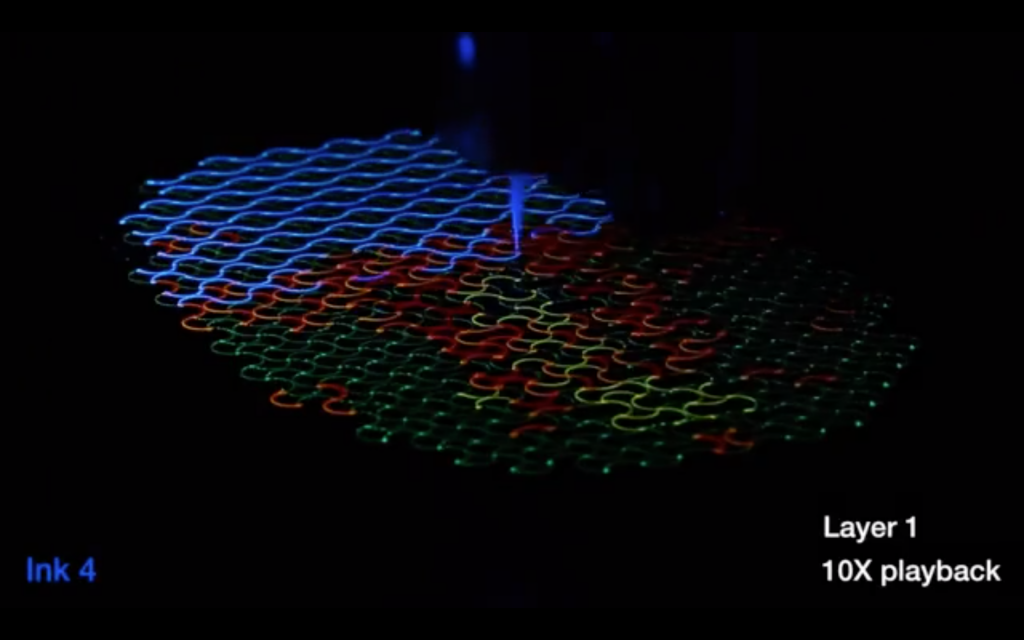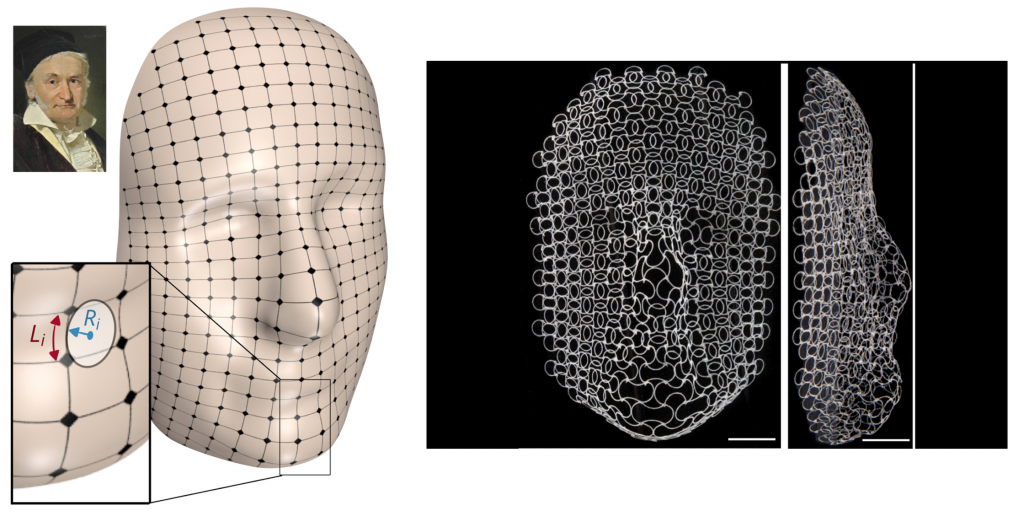4D printed, shape-shifting structures hold significant potential for the future of engineering. Be it self-assembling trusses, or medical devices that help inform cell regeneration, the field still has many challenges to overcome before its possibilities become practical. Up to now, one of the greatest challenges to 4D printing has been the ability to create complex, smoothly-curved shapes. Difficult to do with a single material and a simple structure, a multimaterial, heterogeneous design is required instead.
At Harvard University, researchers from the John A. Paulson School of Engineering and Applied Sciences (SEAS) and the Wyss Institute of Biologically Inspired Engineering have collaborated to create the challenging 4D printed shapes. Demonstrating the potential of the technology in a paper published in the Proceedings of the National Academy of Sciences (PNAS), the methods developed by the team have been used to create a frequency-shifting antenna, and a flat lattice that, when placed in salt water, takes on the shape of a human face.

New classes of shape-shifting matter
When modeling files for 4D printing, designers create features that affect the transformation of the material it is made from. By understanding exactly how the material will expand or contract when stimulated, i.e. by heat or salt water, designers can thereby precisely control the transformation of a 2D object into a predictable 3D shape.
In the recent experiment from SEAS and Wyss, a complex lattice is built-up in several layers using the select, multi-direction repetition of a curved rib. The ribs are deposited in the process using a combination of four different elastomeric inks – each one reacting differently to the proposed stimuli.

The exact placement, orientation, and material chosen to create each individual rib is predetermined in the design phase in order to achieve a predictable transformation. In one example, the transformation of the ribs was tuned to create an antenna which changes resonant frequency as moves from a flat to a rounded-arch shape. In a further, more complex, demonstration, the ribs were also tuned to mimic the contours of the face of 19th century mathematician Carl Friedrich Gauss, who laid the basis of differential geometry.

“Using an integrated design and fabrication approach, we can encode complex ‘instruction sets’ within these printed materials that drive their shape-morphing behavior,” explains Professor Jennifer A. Lewis, leader of the award winning Lewis Lab at Harvard and the Hansjorg Wyss Professor of Biologically Inspired Engineering,
Distilling the importance of such a project, Professor Lewis adds:
“Together, we are creating new classes of shape-shifting matter.”
Form follows function
The controlling geometric designs created through this research are ready to be applied to other stimuli-responsive materials, opening up exploration of 4D printed, “scalable, reversible, shape-shifting structures with unprecedented complexity.” Example applications for such a multidisciplinary approach include the soft electronic development, smart fabrics, tissue engineering and robotics, exemplified in some ways by Harvard’s other developments in soft robotics.
Professor L. Mahadevan, a Harvard professor of physics and organismic and evolutionary biology and co-author on the study, concludes, “Form both enables and constrains function. Using mathematics and computation to design form, and a combination of multiscale geometry and multimaterial printing to realize it, we are now able to build shape-shifting structures with the potential for a range of functions.”
For further reading: “Shape-shifting structured lattices via multimaterial 4D printing” is co-authored by J. William Boley, Wim M. van Rees, Charles Lissandrello, Mark N. Horenstein, Ryan L. Truby, Arda Kotikian, Jennifer A. Lewis, and L. Mahadevan.
For updates on this project and more additive manufacturing related news subscribe to the 3D Printing Industry newsletter, follow us on Twitter and like us on Facebook. Seeking jobs in engineering? Make your profile on 3D Printing Jobs, or advertise to find experts in your area.
Featured image shows a 4D printed lattice pattern of mathemetician Carl Friedrich Gauss. Photo via Harvard University



